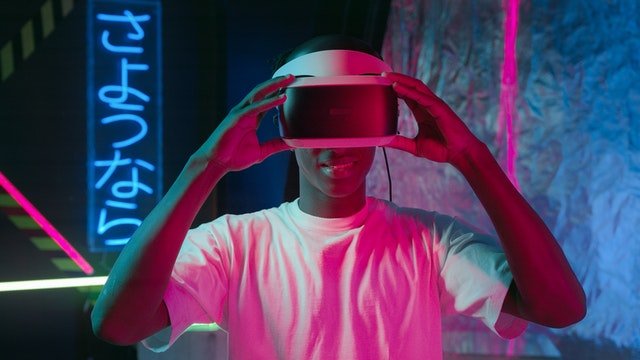VR improves health effects of gaming vs traditional consoles
Table of Contents:
Parents vs the Console
For many years, console gaming has caused tension between parents and their children. The worries are obvious: too much time sat down looking at a screen can be bad for both your physical and mental health, not to mention the solitary nature of many games affecting sociability. But now, with the advent of VR, many of these concerns have gone out the window as new forms of gaming offer multiple health benefits for children in Virtual Reality.
Old Worries, New Positive VR Health Effects
Virtual Reality creators are naturally cautious over the potential problems of children being allowed unfettered access to video games, with Oculus Rift and Samsung Gear placing a 13+ age rating on their devices and Playstation VR 12 and over. But should parents really be concerned? Here are some reasons why VR gaming trumps console gaming when it comes to wellbeing.
Health and Fitness
Console gaming is sedentary, and it is well known that sedentary behaviour can have hugely detrimental effects on health. VR can offer the perfect antidote to this as the opportunities to get children up and moving are vast. The range of exercise and fitness games is expanding all the time, with fun titles such as Beat Saber and Knockout League taking advantage of the unprecedented freedom of movement provided by 6DOF technology to encourage children to work out while having fun. Such movement is exhausting, meaning that unhealthy gaming marathons are less likely.
And with technologies such as the Oculus Move fitness tracker app, you can track the number of calories burned and move minutes of your gaming sessions to get an idea of just how much exercise you’re getting. All of this means that sedentary gaming is no longer a threat to our children’s health and fitness.
Relaxation and Creativity
As well as being good for children’s physical health, VR gaming can be leveraged to provide a safe escape from the stresses and strains of everyday life, thus improving children’s mental health as well. In Harmonix Music VR, users can listen to their music library while relaxing on an alien beach. You can lie back and watch your songs transform the beach, but you can also get creative by making 3D drawings which react to the music or choreographing dance moves for a range of weird and wonderful characters to perform.
The potential for creative games which help kids to explore their imaginations and develop their curiosity and problem-solving skills is also vast. Games like Contraption, in which you have to build machines in order to overcome challenges, draw on children’s creativity and ingenuity, and all while moving their whole body rather than just their thumbs and fingers.
Socialising, Collaboration and Teamwork
Multiplayer games have been around almost since gaming began and online gaming has taken this to another level. However, the picture of a child sitting alone in front of a computer screen playing video games is all too common and many children can become isolated, stunting the development of their social skills.
With Virtual Reality, children can come together in virtual locations to socialise and collaborate in ways that are simply impossible on traditional gaming consoles. In the game Keep Talking and Nobody Explodes, for example, players have to work together to defuse a bomb by talking their friends through a bomb defusal manual, teaching them to cooperate and communicate, and all while socialising.
Unique Experiences
VR gaming offers today’s children the chance to have experiences and explore places children from even twenty years ago couldn’t even dream of. Google Expeditions is a free app which children can use to explore countries and landmarks all around the globe, while BBC Earth: Life in VR allows children to learn about the underwater world along the Californian coast.
Along with more educational games such as this, there are games like Eagle Flight, in which you play as an eagle flying around Paris. Flight simulators have been around for years, but they can now be experienced literally from the pilot’s interior cockpit point of view.
Is VR Gaming Healthy?
The question of whether VR gaming is healthy invites a nuanced perspective that highlights its numerous benefits while acknowledging potential drawbacks.
On the positive side, VR gaming can significantly enhance physical activity and social interaction, both of which are vital for mental well-being. Many VR games require players to engage in physical movement, transforming traditional gaming into an active experience that encourages exercise. Research has shown that immersive VR experiences can boost motivation for physical activity, making workouts feel more like enjoyable play rather than a chore. Additionally, social VR platforms foster connections among users, creating a sense of community that can alleviate feelings of isolation and contribute positively to emotional health.
Moreover, the therapeutic applications of VR are gaining recognition in various fields, including rehabilitation and mental health treatment. For instance, VR is being used to help patients recover from injuries by providing engaging, gamified exercises that promote movement and coordination. This innovative approach not only makes rehabilitation more enjoyable but also enhances adherence to therapy regimens.
While it’s important to be mindful of potential issues such as cybersickness or discomfort from prolonged use, these can often be managed with simple strategies like taking regular breaks and ensuring proper headset fit. By adopting these practices, users can fully enjoy the immersive benefits of VR gaming while minimizing any negative effects. As research continues to unfold, it becomes increasingly clear that when used thoughtfully, VR gaming can be a powerful tool for promoting mental health in the metaverse, fitness, and social connection, making it a valuable addition to modern lifestyles.
Mitigating Risks Through Best Practices
To maximize virtual reality health benefits while minimizing risks, users should adopt best practices. These include:
- Taking Regular Breaks: Users should take breaks every 20-30 minutes to reduce eyestrain and prevent cybersickness.
- Adjusting Equipment Properly: Ensuring that headsets are fitted correctly can help alleviate discomfort and improve visual clarity.
- Monitoring Playtime: Limiting overall playtime can help prevent both physical and psychological side effects.
- Choosing Appropriate Content: Selecting metaverse video games that suit individual tolerance levels can reduce the likelihood of adverse reactions.
VR Benefits for Children and the Future of Gaming
VR has already changed the world of gaming, but it’s clear that it’s going to have many advantages over traditional console gaming as the technology develops and expands. Early signs for parents concerning VR’s health effects are very positive and the potential for getting kids moving and active is fantastic. With new technologies, there is always the need for sensible caution, but, in a recent study carried out by Common Sense, an organisation devoted to helping today’s youth navigate the difficult world of media and technology, co-author Jeremy Bailenson writes, “The vast majority of hundreds of kids… observed have been thrilled and delighted. Nobody got sick, nobody got hurt, and to date no parents have reported any ill effects.” All this is good news for children and parents alike and, the best news from the study: “VR is super fun.”
Check also The Real Benefits of VR.

Author: Rafał Siejca
Rafal has over twenty years of corporate experience, including roles at Millennium Bank, Comarch, and leading software teams at PZU, one of Europe’s largest insurance companies. As one of Poland’s few true VR experts with a decade of experience, he ensures timely, high-quality project delivery as CEO and CTO.










